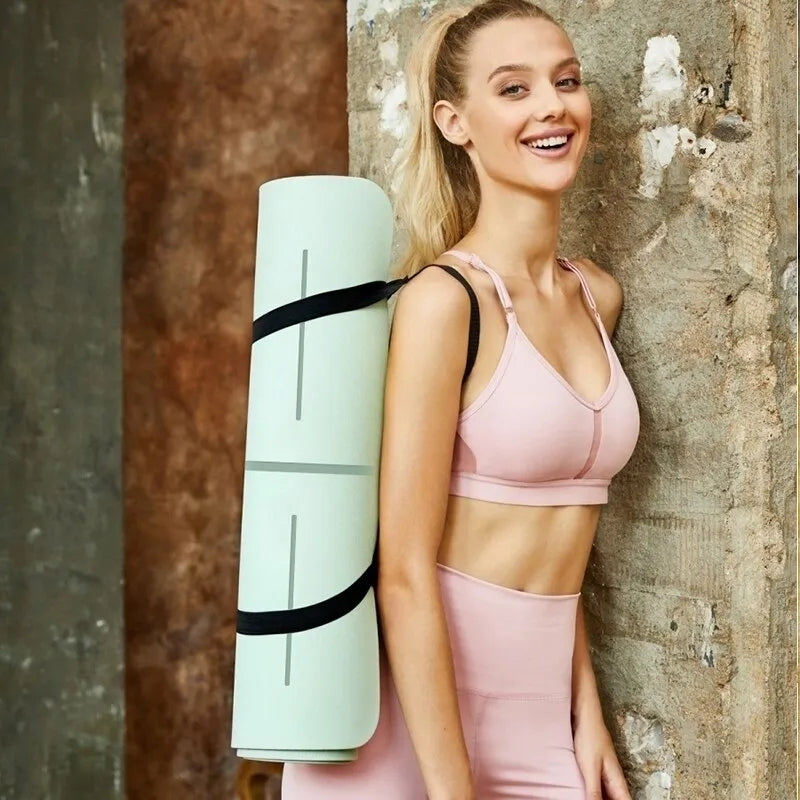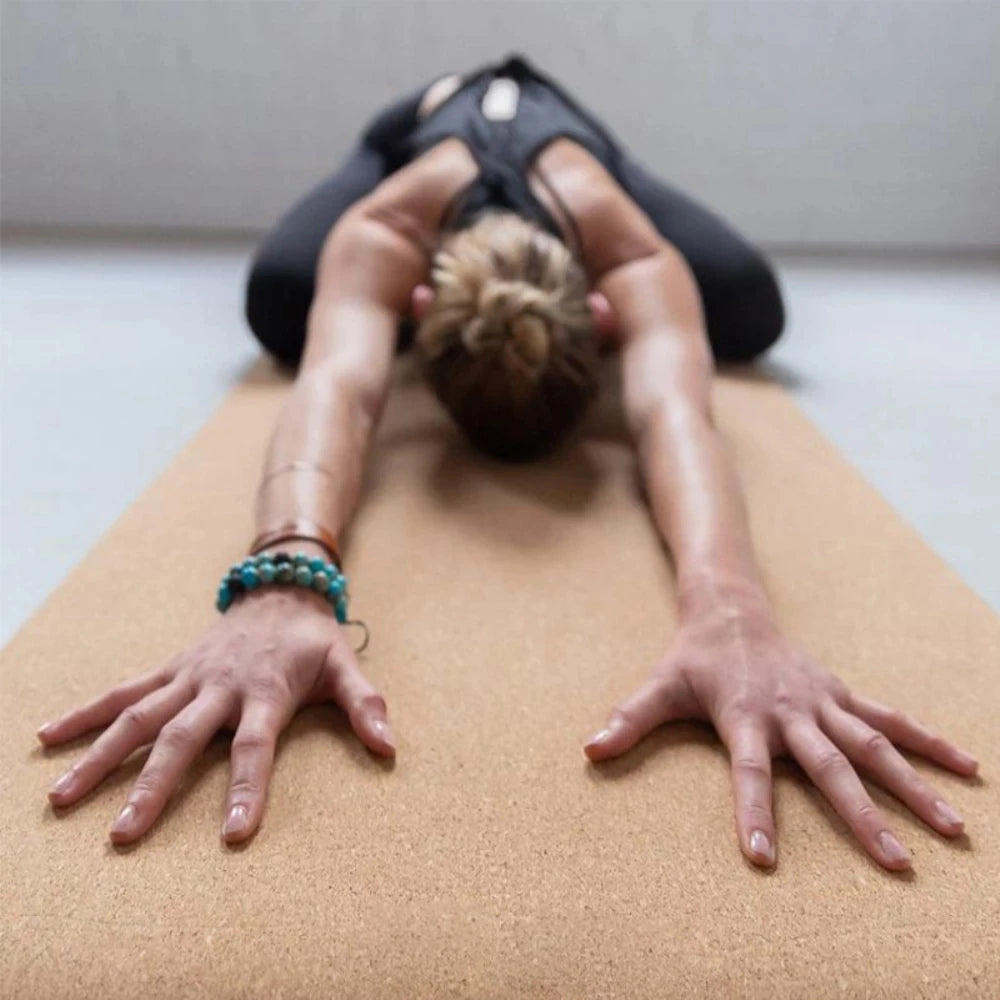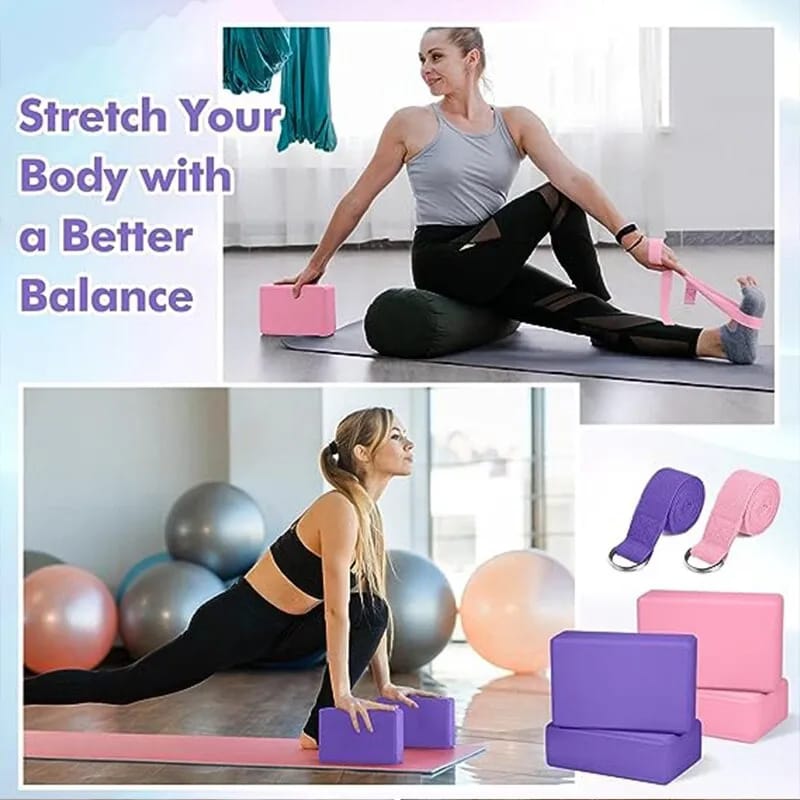Tips for choosing a mat
Tips to help you select the perfect mat
Choosing the right yoga or Pilates mat is important for comfort, support, and overall enjoyment of your practice.
Here are some tips to help you select the perfect mat:
Standard yoga mats are typically around 1/8 inch thick. If you have joint issues or prefer more cushioning, consider a thicker mat 1/4 inch or more.
Pilates mats are often thicker around 10 to 15 millimeters than yoga mats to provide extra cushioning for exercises done on the floor.
Consider eco-friendly materials like natural rubber, TPE (Thermoplastic Elastomer), or cork for a more sustainable choice.
PVC mats are common and affordable but may not be as environmentally friendly. Look for options labeled as free from harmful chemicals.
Look for a mat with a non-slip surface to prevent hands and feet from slipping during poses or exercises.
Some people prefer a smooth texture, while others like a more textured surface for added grip.
Most yoga mats are about 24 inches wide and 68 to 72 inches long. Consider a longer mat if you're tall.
If you want more space or have a larger frame, explore mats with extra width or length.
If you plan to carry your mat to classes or travel with it, choose a lightweight option.
Thicker mats can be heavier, so balance thickness with portability based on your needs.
Look for mats made from durable materials that can withstand regular use without breaking down quickly.
Mats with closed-cell construction are resistant to moisture, making them more durable and easier to clean.
When selecting a Pilates mat, consider the following tips to ensure it meets your needs for comfort, support, and functionality.
Choose a mat with moderate thickness (around 10-15mm) to provide sufficient cushioning for your spine and joints during Pilates exercises. This ensures comfort without compromising stability.
Look for a non-slip, closed-cell foam material that provides traction and is easy to clean. Mats made of TPE (thermoplastic elastomer) or PVC (polyvinyl chloride) are common choices for Pilates mats.
Opt for a mat with a textured or ribbed surface to enhance grip, preventing slipping during Pilates movements. A grippy surface is crucial for stability during exercises.
Ensure the mat is long and wide enough to accommodate your body comfortably, especially if you are tall. Standard Pilates mats are typically around 24 inches wide and 68-72 inches long.
If you plan to carry your mat to classes, consider its weight and ease of portability. Mats with integrated straps or that roll up easily are convenient for transportation.
Choose a mat that is durable and resistant to wear and tear. Pilates mats need to withstand repeated use and pressure from various exercises.
While not a critical factor, you might want to choose a mat in a color or pattern that appeals to you. It can add a touch of personalization to your Pilates practice.
Pilates mats come in various price ranges. Consider your budget, but also keep in mind that investing in a high-quality mat can contribute to a more comfortable and enjoyable Pilates experience.
Research reviews and choose mats from reputable brands known for producing durable and high-quality Pilates equipment.
Some Pilates mats have extra thickness at the ends, providing additional support for the head and tailbone during exercises that involve lying on your back.
Remember that personal preferences play a significant role in choosing a Pilates mat, so consider your specific needs and preferences when making your selection.
When choosing a yoga or exercise mat, consider the following tips:
Thickness - Opt for a mat with adequate thickness to provide comfort and support. Thicker mats are generally more comfortable for floor poses and exercises.
Material - Choose a material that suits your preferences and needs. Common materials include PVC, TPE, rubber, and natural materials like cork or jute. Consider factors like grip, eco-friendliness, and durability.
Texture and Grip - Look for a mat with a non-slip surface or texture to provide a secure grip during your practice. This is crucial for preventing slips, especially during more active or sweaty workouts.
Size - Ensure the mat is long and wide enough to accommodate your body comfortably. A standard size is usually around 24 inches wide and 68-72 inches long, but taller individuals might prefer longer mats.
Portability - If you plan to carry your mat to classes or travel with it, consider its weight and how easy it is to roll up and transport. Lightweight and portable mats are convenient for on-the-go use.
Durability - Choose a mat that is durable and resistant to wear and tear. This is particularly important if you have a regular and vigorous practice.
Eco-Friendly Options - If environmental impact is a concern, opt for mats made from eco-friendly materials like natural rubber, cork, or TPE, which is a biodegradable alternative to PVC.
Budget - Mats come in a range of prices. While it's tempting to go for the least expensive option, investing in a quality mat can improve your comfort and overall yoga experience.
Cleaning and Maintenance - Consider how easy it is to clean and maintain the mat. Some materials are easier to wipe down, while others may require more care.
Brand Reputation - Research reviews and consider the reputation of the brand. Established brands often have a track record for producing reliable and high-quality mats.
Ultimately, the best mat for you depends on your personal preferences, budget, and the type of exercises or yoga you practice.




